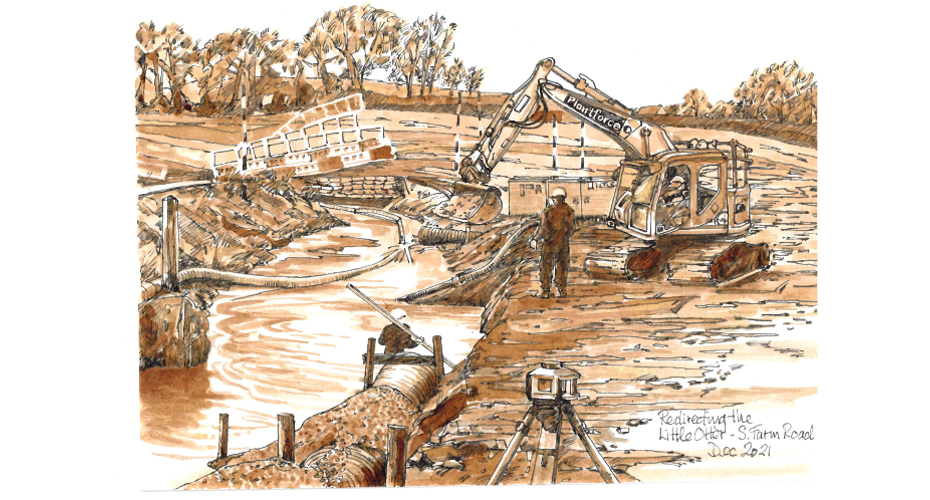The cultural and creative response to a pioneering climate adaptation project in Devon is to be showcased in an exhibition at the University of Exeter this month.
Illustrations, photos, prints of textile work and music created by artists in Budleigh Salterton will all feature as part of The Lower Otter Restoration Project in Translation.
Funded by the Arts and Humanities Research Council, and organised in partnership with the Environment Agency, the project will reflect upon how the creative processes at play in Budleigh might inform the communication of other climate adaptation projects.
The Lower Otter Restoration Project was launched in 2014 in a bid to improve the area's resilience to climate change, and has resulted in significant alterations to the landscape around the estuary of the Otter River.
"This exhibition testifies to the impact of climate adaptation projects on the local community and biodiversity in the region," says Dr Natália Pinazza, project lead and Senior Lecturer in Latin American and Lusophone Studies, in the Department of Languages, Cultures and Visual Studies. "It reveals how local artists registered the transformations engendered by the project and documented these changes through songs, textile art, illustrations, and photography."
Dr Pinazza has worked with the Environment Agency and local artists to source examples of art produced during the span of the restoration work. They include wildlife photographs from photographer David White, who captured images of returning bird species and other animals such as beavers; illustrations from John Washington, who chronicled the changes to the landscape and the work that went into it; and the textiles of Brenda Thomas, who was inspired by new viewpoints created as a result of the improvements.

Together, they capture the significant landscape alterations effected by the £27m restoration project, including the return of 55 hectares of farmland to rare intertidal habitat. This involved the removal of embankments and the creation of 6km of creeks to connect the floodplain to the estuary.
Raised walkways and nature observation stations were installed, two hectares of woodland and grassland planted, and the town's cricket club relocated off the floodplain.
"Seeing your land flooded like that must have been very emotive and powerful for the residents of Budleigh," adds Dr Pinazza. "In real time and in living colour, local artists observed the land being restored to its natural state - both a turning back of the clock, but also a significant step forward for nature-based solutions.
"What's fascinating is how they responded to that through art and craft, and it is that process that has the potential to resonate with other contemporary restoration projects."






